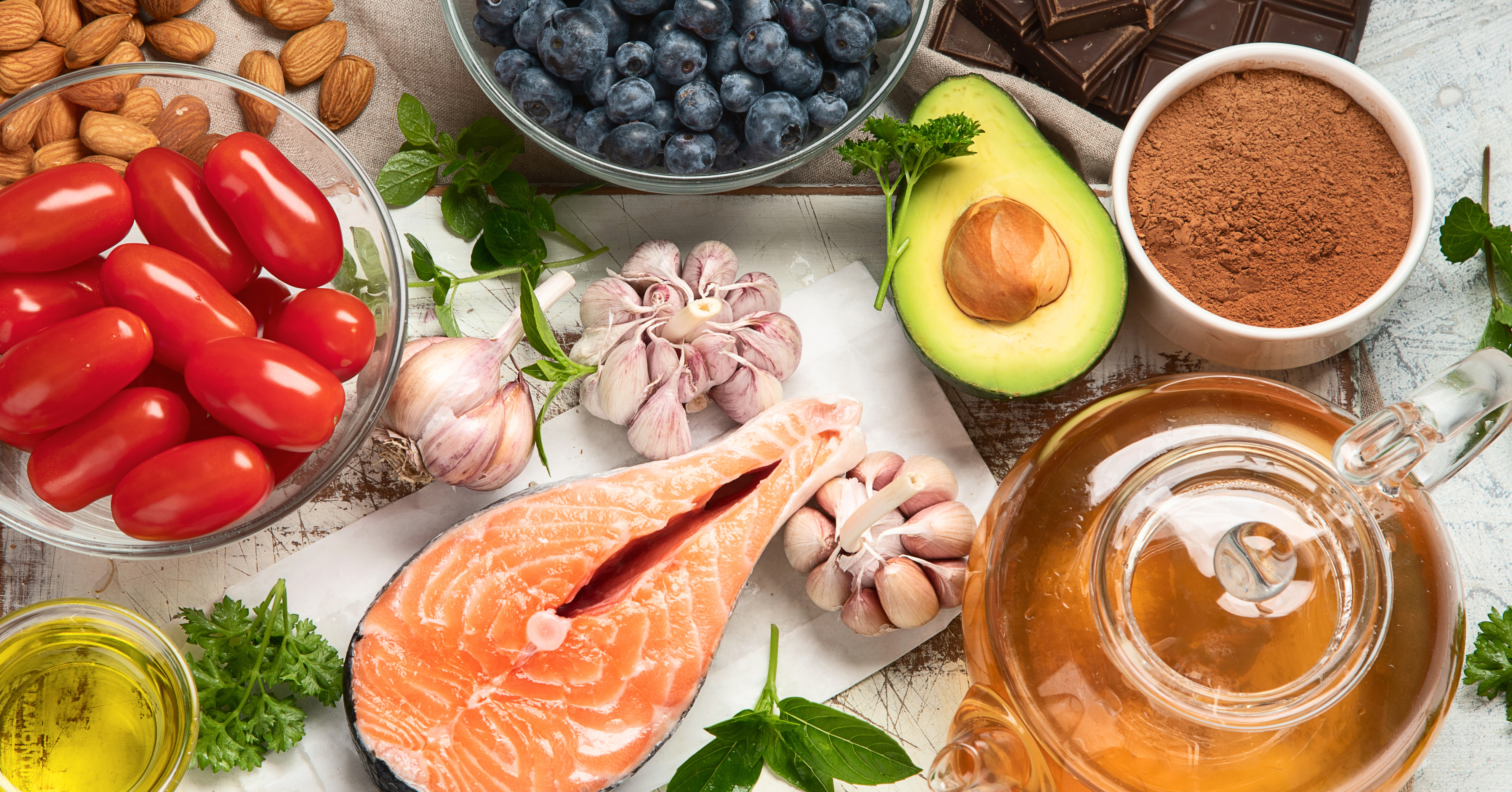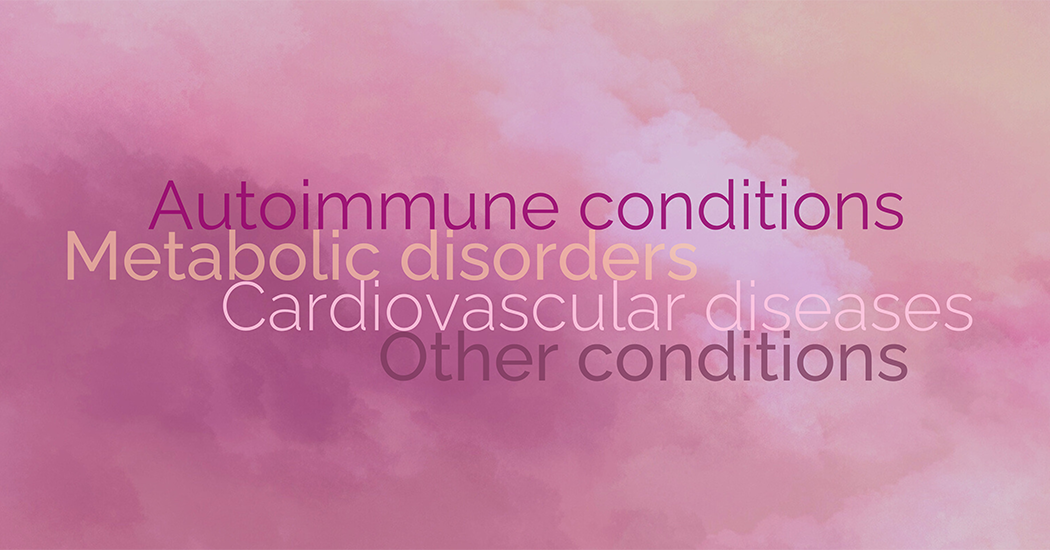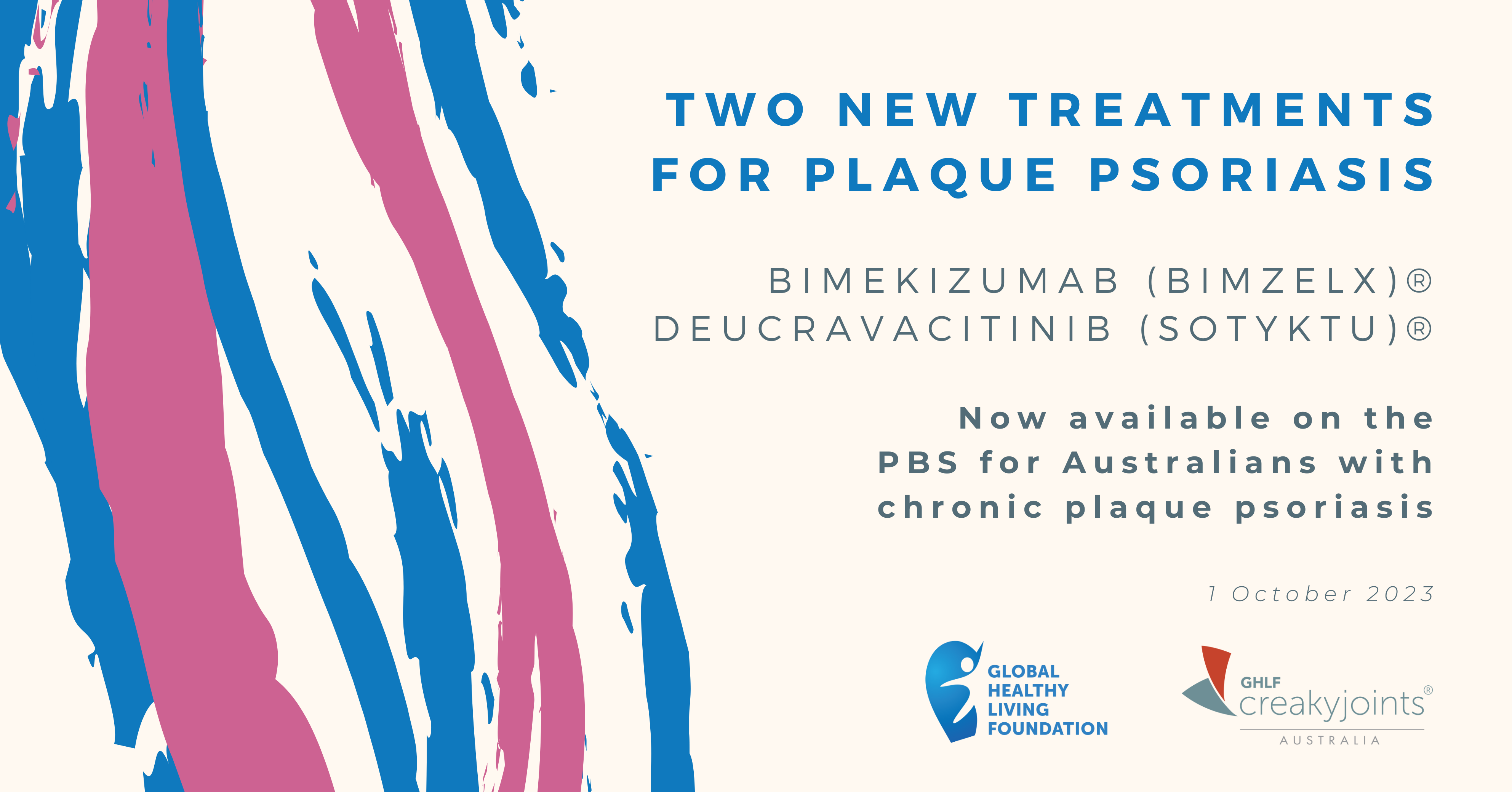PatientSpot helps you track your medications and symptoms, provides educational resources and can be used in health research. ....... Read more >

Unveiling the proven benefits of diet and exercise for people with psoriasis
Unveiling the proven benefits of diet and exercise for people with psoriasis
Can regular exercise and a healthy diet really help manage psoriasis? Yes, but which ones? We explain the links between diet, exercise and psoriasis and share tips and strategies to help you get started.
Published 14 June 2023

If you’ve been living with psoriasis or another autoimmune condition for some time, you’ve probably come across many claims of “miracle cures” involving certain diets or supplements. Often, these come from people who profit from selling you their product and have little or no proper scientific evidence to support their claims.
You might also have people around you tell you that you must lose weight and exercise more to feel better. But how do you do that when you don’t even have the energy to do basic housework?
Psoriasis is primarily an autoimmune disorder and it currently has no proven cure. However, the connection between diet, exercise and psoriasis goes beyond mere speculation. Scientific research shows the profound impact that these lifestyle factors have in determining the severity and frequency of flare-ups, risk of developing other health issues as well as the overall well-being of individuals living with psoriasis.
In this article, we’ll look at how making some simple lifestyle changes can help your psoriasis — and what you need to know to get started. It’s a good idea to avoid making too many changes at once. This is partly because it might be too overwhelming for your body (and mind) to deal with. Also, if you only change one or two things at a time, it’s easier to work out what helps and what doesn’t.
Diet, weight loss and psoriasis
According to a literature review published in the International Journal of Environmental Research and Public Health, evidence is accumulating that nutrition plays a major role in the development of psoriasis. Increased body weight, along with poor nutrition and diet, may make symptoms worse or even trigger the disease.
People with psoriasis who are also obese have an increased risk of obesity-related comorbidities commonly found among psoriatic patients. Obesity predisposes the body to a pro-inflammatory state by increasing inflammatory compounds and reducing levels of adiponectin, a hormone that has an anti-inflammatory function.
Obesity may also make certain psoriasis treatments, including disease-modifying drugs (DMARDs) and biologics, less effective and can reduce your chances of getting to low disease activity or remission.
Eating anti-inflammatory foods regularly, losing weight and adopting a healthy lifestyle could improve psoriasis severity, particularly in people with moderate to severe disease.
A healthy diet for a healthy weight
There is convincing evidence following an anti-inflammatory diet pattern may help with weight loss as well as help prevent or manage diabetes and heart disease.
“Diet has been a big factor for me. I struggle with gluten and dairy, but I try to have food that will not cause a flare, so I eat as healthily as I can.” — Amy T
Anti-inflammatory diets include several foods that are believed to interfere with the inflammatory process, though research on its exact mechanism is not conclusive. There is no single anti-inflammatory diet plan. However, the Mediterranean diet and DASH diet are popular dietary plans that feature many anti-inflammatory foods.
Foods to increase
Fruits and vegetables
Produce loaded with antioxidants can help cut down on inflammation. Aim to get a range of colours each day from less processed fruits and vegetables. Fresh produce always works, but frozen is a nutritious option that’s also more affordable.
Fish
Fish, especially fatty fish like salmon and mackerel, are loaded with anti-inflammatory omega-3 fatty acids. Research shows that omega-3 fatty acids may help protect people with autoimmune conditions against heart disease.
Nuts
Eating nuts frequently is linked with lower levels of inflammation in the body. Choose the ones you like the best: Peanuts, almonds, walnuts, cashews, pistachios and pecans are all great choices.
Whole grains
Whole grain foods are full of fibre, which can help steady blood sugar, boost weight loss and prevent heart disease. Choose grain foods like brown rice, whole-grain bread, quinoa, barley and wheat berries to reap the benefits.
Foods to avoid
Refined carbohydrates
Carbohydrates include foods made up of starches, fibre and sugar. They are important for our overall health and serve as a source of energy, but some carbohydrates are better for us than others.
Refined carbohydrates are grains that have been highly processed. Unlike whole grains, they have lost their bran, endosperm and germ. Examples include foods made with white flour, such as white bread, white rice, most cakes, cookies, other sweet treats and many types of cereal.
These foods trigger our bodies to generate inflammatory compounds such as free radicals and cytokines.
Foods high in added sugar
Sugar is a type of carbohydrate that can either occur naturally in some foods or be added to products including snacks and convenience foods.
Our bodies naturally produce insulin to process sugar at a steady rate. However, if we consume too much sugar, our insulin production can’t keep up so the excess energy gets stored in fat cells. This causes the fat cells to become inflamed.
Saturated fats
Saturated fatty acids (SFAs) can be found in fatty and processed meats, full-fat dairy from cream and butter and tropical oils (coconut, palm and palm kernel oil).
Research studies indicate that dietary SFAs are a major risk factor for psoriatic inflammation. It appears that inflammation from these sources can occur even in people that are not obese. Therefore, restricting SFAs in the diet may be beneficial, regardless of body weight.
“A predominately vegetarian diet has helped my general pain management. I found meat to be very heavy and left me feeling lethargic and stiff.” — Brea W
Excess alcohol
Many alcoholic beverages contain carbohydrates that can raise blood sugar levels. However, alcohol is not a carbohydrate. It can provide the body with energy but we don’t rely on it to function.
Reducing your alcohol intake can allow your medications to work more effectively, increase your likelihood of reaching remission, and reduce your risk of liver damage. It can also reduce the risk of women developing psoriatic arthritis.
It is generally a good idea to discuss good nutrition with your healthcare provider, such as your GP or dietitian. Together, you can decide which foods to eat (and which ones to avoid) to better manage your psoriasis as well as your overall health.
Exercise for psoriasis
According to research published in the journal, Brain, Behavior and Immunity, one 20-minute session of moderate exercise can stimulate the immune system and produce an anti-inflammatory response. Multiple studies have also demonstrated that exercise reduces fatigue — a major issue for many patients with psoriasis. It sounds counterintuitive that if you have too much fatigue to exercise, physical activity can help reduce your fatigue, but it is often a matter of starting slowly and building up.
The benefits of regular exercise for people with psoriasis include:
- Better quality and restorative sleep.
- Improved strength and bone health.
- A greater sense of well-being and improved mental health.
“I walk once or twice a day. It gets me out of the house and I enjoy walking. It’s more for my mental health, which in turn helps me cope with pain and fatigue.” — Vicki K
Sarah Comensoli is an exercise physiologist at BJC Health rheumatology clinic in Sydney, Australia. She believes exercise is one of the most powerful tools available when it comes to managing health and inflammation. “There are too many benefits to list, but in this case, it’s worth highlighting that exercise can improve circulation, reduce chronic inflammation and improve immune function. So, although regular exercise isn’t the easiest activity for someone with an inflammatory condition, for me it’s an essential part of a holistic health and wellness plan.”
Tips and strategies for getting started with exercise
Before you start an exercise program, ensure you have comfortable clothing that doesn’t restrict your movement and provides the necessary support. Choose a moisture-wicking fabric that helps avoid irritating the skin and aggravating psoriasis patches. Check your footwear suits your feet and the activities you plan to do.
Once you decide to add exercise to your overall psoriasis management plan, a few helpful hints and simple modifications can ensure your workout plan is safe and effective.
If you’re not a seasoned exerciser, it’s a good idea to talk to your doctor first to assess what you can and cannot do; some activities may not be recommended based on your health and psoriasis symptoms.
Twisting your body or limbs to avoid discomfort can ultimately cause muscle or joint injuries. Consider working with a physical therapist or personal trainer knowledgeable about psoriasis and psoriatic arthritis. They can help you develop a regular, safe and effective workout plan that’s appropriate for you.
The Exercise Right campaign and website were created by Exercise & Sports Science Australia. The site outlines the recommended activity levels for people of all ages. It includes tips for people with disability or chronic conditions.
For adults aged 18 to 64 years, the recommendation is to accumulate 150 to 300 minutes (2 ½ to 5 hours) of moderate-intensity physical activity or 75 to 150 minutes (1 ¼ to 2 ½ hours) of vigorous-intensity physical activity, or an equivalent combination of both moderate and vigorous activities, each week. It is also ideal to do muscle-strengthening activities on at least two days each week.
Plan your activities to suit your needs and abilities
Progress slowly
Think of exercise as a long-term commitment. Go at your own pace and modify your activities to suit your abilities — pushing yourself to perform at a level beyond your abilities can lead to flares, pain and injuries.
Comensoli says, “Although there is no one exercise to rule them all when it comes to strengthening the immune system, it can be comforting to know that all movement is helpful. Find things you enjoy and work on doing them regularly, even if it’s in small chunks. No amount of movement is too small. The key is finding a somewhat comfortable starting point, and gradually progressing from there.”
“I’ve found walking even 30 minutes a day at a shopping centre or around the neighbourhood helps my flexibility and range of motion and it’s not too taxing on my body if I’m not feeling well.” — Amy T
Listen to your body
When planning your exercise program, find times that suit your body rhythm and lifestyle. Some people prefer to exercise in the morning as it loosens them up and helps them feel good throughout the day. Others, especially those with chronic conditions, take some time to get going in the mornings so they may find exercising in the afternoons a bit easier.
It may be best to avoid vigorous exercises right before bed as this can hype you up and can interfere with sleep in some people.
It’s a good idea to have a plan B for the days your psoriasis is flaring or you feel otherwise unwell. This could mean doing less demanding activities or reducing your time spent exercising. You may even need to skip those days altogether and allow your body time to rest and recover. However, it is important to restart slowly as soon as possible so you don’t lose your momentum.
Keep an exercise diary
Pay attention to your symptoms after a workout and jot down how you’re feeling. You may notice a pattern and realise something does or doesn’t work well for your body. Exercise diaries are also helpful in tracking your progress and keeping you motivated to achieve more.
What to include in your exercise program
Aerobic exercises
Generally, low-impact activities such as walking or cycling — either outdoors or on a treadmill or exercise bike — are easiest on the joints. Though higher-intensity workouts won’t be appropriate for everyone, some people whose symptoms are well-managed may be able to tolerate more rigorous exercise. Warm water exercises are usually gentle on the body but people with active psoriasis may find swimming challenging as the chlorine in pools can irritate the skin.
Resistance training
Exercise that involves movements using weights, weight machines, weight cuffs (worn around the ankles and wrists), resistance bands or body weight alone are effective. And it doesn’t take a bodybuilder’s routine or even that much time to realise the benefits.
Flexibility exercises
Exercises that promote flexibility can help ease joint stiffness, strengthen muscles and prevent injury during your daily activities. A review of studies published in Biological Research for Nursing found that the combination of yoga postures, slow-breathing techniques and higher doses of yoga practice may be particularly helpful in reducing inflammation in chronic conditions.
Balance exercises
People who’ve had psoriasis for a long time also tend to have an increased risk of weakened bones (osteoporosis) and loss of bone mineral density (osteopenia), according to a review published in March 2022 in the journal Clinical and Experimental Dermatology. Balance exercises reduce the risk of falls and fractures. Mind-body practices such as yoga, Pilates, Qi Gong, and tai chi employ gentle, flowing movements that help improve balance and flexibility.
Variety
Doing the same movements over and over again can put constant stress on the joints and muscles and lead to injury. Include a variety of movements and space workouts apart so each muscle group has adequate time to recover from exertion. For example, alternate between upper and lower body exercises.
Include warmups and cool downs in your exercise plan.
Always warm up before exercising to wake up your muscles, work through stiffness and prevent injury. After a workout, cool down to prevent stiffening with a slow-paced walk or some light stretching.
By incorporating a balanced diet and regular exercise into your lifestyle, you can improve your physical and mental well-being. It is best to incorporate such complementary therapies with conventional medicines to achieve optimal outcomes for your overall health.
If this content has raised feelings that concern you, visit the Lifeline website or call 13 11 14.
Sections of this article have been adapted, with permission, from corresponding articles created by our CreakyJoints US colleagues. Some content may have been changed to suit our Australian audience.
This information should never replace the information and advice from your treating doctors. It is meant to inform the discussion that you have with healthcare professionals, as well as others who play a role in your care and well-being.
If you find this exclusive Psoriasis Wellness series helpful, please consider inviting others to sign up by sharing this link with them: ghlf.org.au/psoriasis-wellness-series
Alotaibi HA. Effects of Weight Loss on Psoriasis: A Review of Clinical Trials. Cureus. 2018 Oct 24;10(10):e3491. doi: 10.7759/cureus.3491. PMID: 30648033; PMCID: PMC6318144. https://www.ncbi.nlm.nih.gov/pmc/articles/PMC6318144/
American Academy of Dermatology Association: Healthy Diet and Other Lifestyle Changes That Can Improve Psoriasis https://www.aad.org/public/diseases/psoriasis/insider/diet
Arulselvan P, et al. (2016). Role of Antioxidants and Natural Products in Inflammation. Oxidative Medicine and Cellular Longevity, 2016. https://doi.org/10.1155/2016/5276130
Barrea L, et al. (2016). Environmental Risk Factors in Psoriasis: The Point of View of the Nutritionist. International Journal of Environmental Research and Public Health, 13(7). https://doi.org/10.3390/ijerph13070743
Chung M, et al. Dietary Intervention and Supplements in the Management of Psoriasis: Current Perspectives. Psoriasis (Auckl). 2022;12:151-176 https://doi.org/10.2147/PTT.S328581
Dimitrov, S., Hulteng, E., & Hong, S. (2017). Inflammation and exercise: Inhibition of monocytic intracellular TNF production by acute exercise via β2-adrenergic activation. Brain, Behavior, and Immunity, 61, 60-68. https://doi.org/10.1016/j.bbi.2016.12.017
Djalilova DM, Schulz PS, Berger AM, Case AJ, Kupzyk KA, Ross AC. Impact of Yoga on Inflammatory Biomarkers: A Systematic Review. Biol Res Nurs. 2019 Mar;21(2):198-209. doi: 10.1177/1099800418820162. Epub 2018 Dec 20. PMID: 30572710; PMCID: PMC6700894. https://www.ncbi.nlm.nih.gov/pmc/articles/PMC6700894/
Ellulu, M. S., Patimah, I., Rahmat, A., & Abed, Y. (2017). Obesity and inflammation: The linking mechanism and the complications. Archives of Medical Science : AMS, 13(4), 851-863. https://doi.org/10.5114/aoms.2016.58928
Forbes Health: Best Anti-Inflammatory Foods—Plus What To Avoid https://www.forbes.com/health/body/best-anti-inflammatory-foods/
Harvard T.H. Chan School of Public Health: Diet Review: Anti-Inflammatory Diet https://www.hsph.harvard.edu/nutritionsource/healthy-weight/diet-reviews/anti-inflammatory-diet/
Harvard T.H. Chan School of Public Health: Omega-3 Fatty Acids: An Essential Contribution https://www.hsph.harvard.edu/nutritionsource/what-should-you-eat/fats-and-cholesterol/types-of-fat/omega-3-fats/
Herbert D, Franz S, Popkova Y, Anderegg U, Schiller J, Schwede K, Lorz A, Simon JC, Saalbach A. High-Fat Diet Exacerbates Early Psoriatic Skin Inflammation Independent of Obesity: Saturated Fatty Acids as Key Players. J Invest Dermatol. 2018 Sep;138(9):1999-2009. doi: 10.1016/j.jid.2018.03.1522. Epub 2018 Mar 30. PMID: 29605673. https://pubmed.ncbi.nlm.nih.gov/29605673/
Hooper, J. Mph, Rd. (2016) ‘A Brief Guide to Alcohol Metabolism and Blood Glucose’, Type 1 Traveller, https://type1traveler.com/2016/02/09/a-brief-guide-to-alcohol-metabolism-and-blood-glucose/#:~:text=Although%20many%20popular%20alcoholic%20beverages,through%20a%20process%20called%20fermentation.
Johns Hopkins Medicine: Psoriasis Diet: Foods to Eat and Avoid If You Have Psoriasis. https://www.hopkinsmedicine.org/health/conditions-and-diseases/psoriasis-diet-foods-to-eat-and-avoid-if-you-have-psoriasis
Naldi, L. et al. (2014). Diet and physical exercise in psoriasis: A randomized controlled trial. British Journal of Dermatology, 170(3), 634-642. https://doi.org/10.1111/bjd.12735
Nutrisense: Are Carbs and Sugar the Same? https://www.nutrisense.io/blog/carbs-sugar-blood-glucose
Wi, D., Wilson, A., Satgé, F., & Murrell, D. F. (2022). Psoriasis and osteoporosis: A literature review. Clinical and Experimental Dermatology, 47(8), 1438-1445. https://doi.org/10.1111/ced.15174
Yu, Z., Malik, et al. (2016). Associations between nut consumption and inflammatory biomarkers. The American Journal of Clinical Nutrition, 104(3), 722-728. https://doi.org/10.3945/ajcn.116.134205




This Post Has 0 Comments